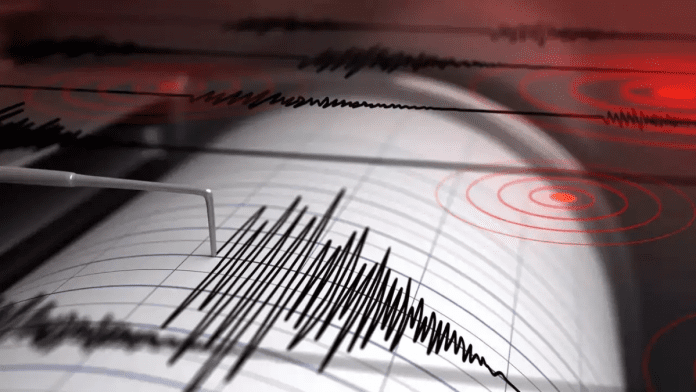🕒 Last updated on August 2, 2025
A powerful earthquake of 6.2 magnitude struck east of the Kuril Islands late on Friday night, as confirmed by the National Centre for Seismology (NCS).
Fresh Tremor Strikes East of Kuril Islands
The quake occurred at 11:50 PM IST on August 1, at a depth of 32 kilometers beneath the Earth’s surface. The exact location was recorded at latitude 50.19° North and longitude 159.14° East.
This new earthquake came just days after a massive 8.8 magnitude earthquake shook the region, marking one of the strongest quakes ever recorded globally. Fortunately, according to initial updates, no casualties have been reported from this fresh tremor either.
While the latest quake is smaller in comparison, its timing and location have raised concerns as the region continues to experience strong and frequent aftershocks. The seismic event adds to the tension in an area already rattled by high seismic activity.
🌋 Ring of fire roars — Russia’s Kamchatka Peninsula lit by earthquake-fueled volcanic blast
Aftershocks Continue to Shake the Region
Since the 8.8 magnitude earthquake hit earlier this week off the eastern coast of Russia, the region has been experiencing a continuous series of aftershocks. These are smaller quakes that usually follow a larger mainshock. According to data from the US Geological Survey, over 125 aftershocks of magnitude 4.4 or greater have been recorded in the area within 16 hours of the major quake.
A powerful 6.9 magnitude aftershock that struck barely forty-five minutes after the huge earthquake was one of three aftershocks that were 6.0 magnitude or higher. Another significant 6.4 magnitude tremor occurred around 200 miles southwest of the main earthquake’s epicenter on Wednesday morning.
Aftershocks are expected following a major earthquake, and they can sometimes cause further damage to already weakened buildings and structures. They also keep residents and authorities on alert, as it becomes difficult to predict when the ground will stop shaking.
Although the 6.2 magnitude quake on Friday was not as strong as the earlier ones, its shallow depth of 32 kilometers makes it notable. Shallow earthquakes are more likely to cause noticeable shaking and potential damage on the surface compared to deeper ones. That’s because the seismic waves have less distance to travel to reach the Earth’s surface, making them more intense when they arrive.
Tsunami Alerts Downgraded; No Major Impact Reported
Following the initial 8.8 magnitude quake, several countries in the Pacific region issued tsunami alerts, including Hawaii, Japan, and parts of the US West Coast. Thankfully, these warnings have subsequently been reduced to advisories, and Hawaii’s tsunami advisory has now been fully withdrawn. No major tsunami-related damages have been reported so far.
The Kuril Islands, located between Russia’s Kamchatka Peninsula and Japan’s Hokkaido Island, are part of a highly seismic zone known as the “Ring of Fire.” This area experiences frequent earthquakes and volcanic activity due to the movement of tectonic plates under the Earth’s surface. The recent seismic activity is a reminder of how active and potentially dangerous this region can be.
🌎 Global tradequake – U.S. slaps up to 41% tariffs, sparks crisis from Canada to Cambodia
Despite the intensity of the 6.2 quake and the long list of aftershocks in recent days, no serious injuries, deaths, or damage reports have come in so far. Authorities are continuing to monitor the situation and have urged residents in affected areas to remain cautious.
As of now, it appears that this part of the world is going through a period of heightened seismic activity, which experts say can last from days to weeks. Residents and emergency teams in the region remain on high alert, as the Earth continues to rumble beneath them.

